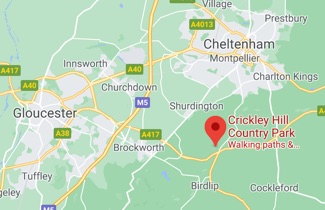Welcome to the Crickley Hill online archive. The excavation of Crickley Hill, on the Cotswold scarp near Cheltenham in Gloucestershire was one of the largest and longest-running excavations in the UK. Running from 1969 to 1993, considerable parts of the site were excavated during the summer seasons. Work on the huge amount of resulting excavation material is still underway. The excavation, and subsequent research, are managed by the Crickley Hill Archaeological Trust.
For the first time, this website provides online access to as much as possible of the considerable excavation record. You can now see photos and browse scans of the excavation records, and see what lay beneath the surface at this important site.
24th January 2025: The trust is delighted to announce the publication of Volume 3 of the excavation report. This covers the Long Mound, the related Cairn, the Sacred Circle and Shrine, and also the Short Mound. At 340 pages long, this is the result of many years of work by Dave Hollos (on the Long Mound and Cairn) and Nicky Snashall (on the shrine), all brought together by Professor Dixon’s excellent analysis, photographs and drawings. On sale now at £25 from the publications page here.







